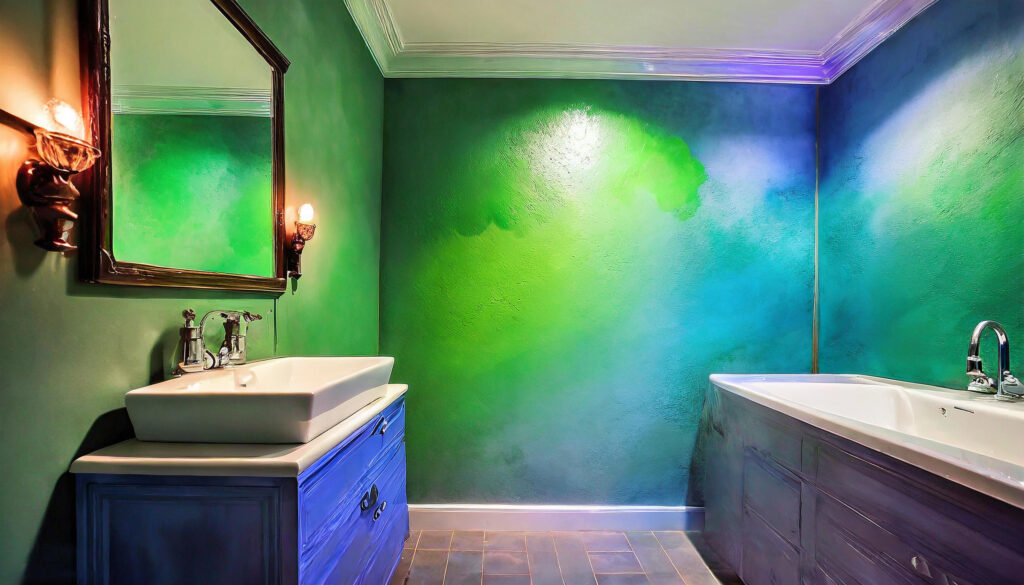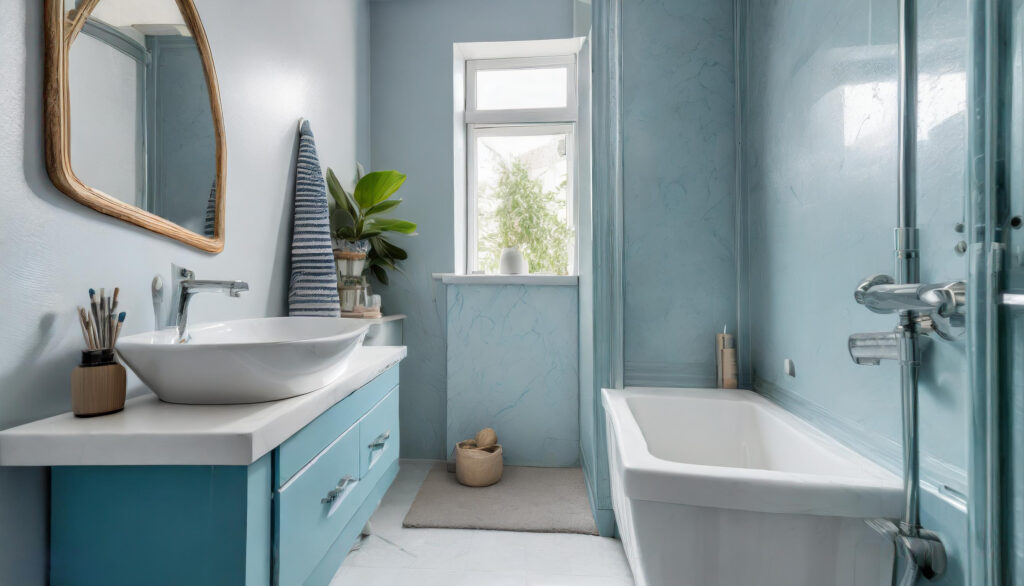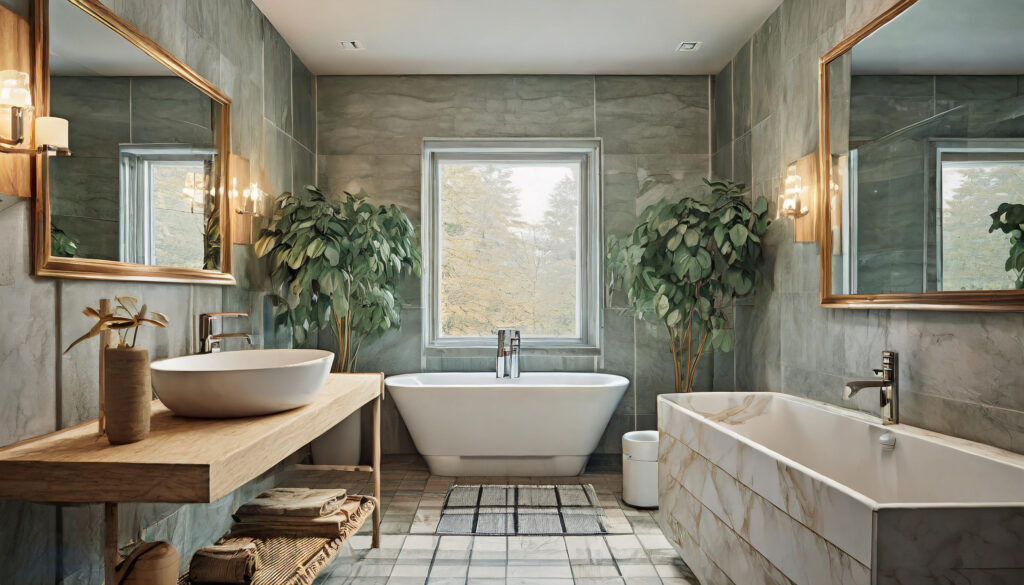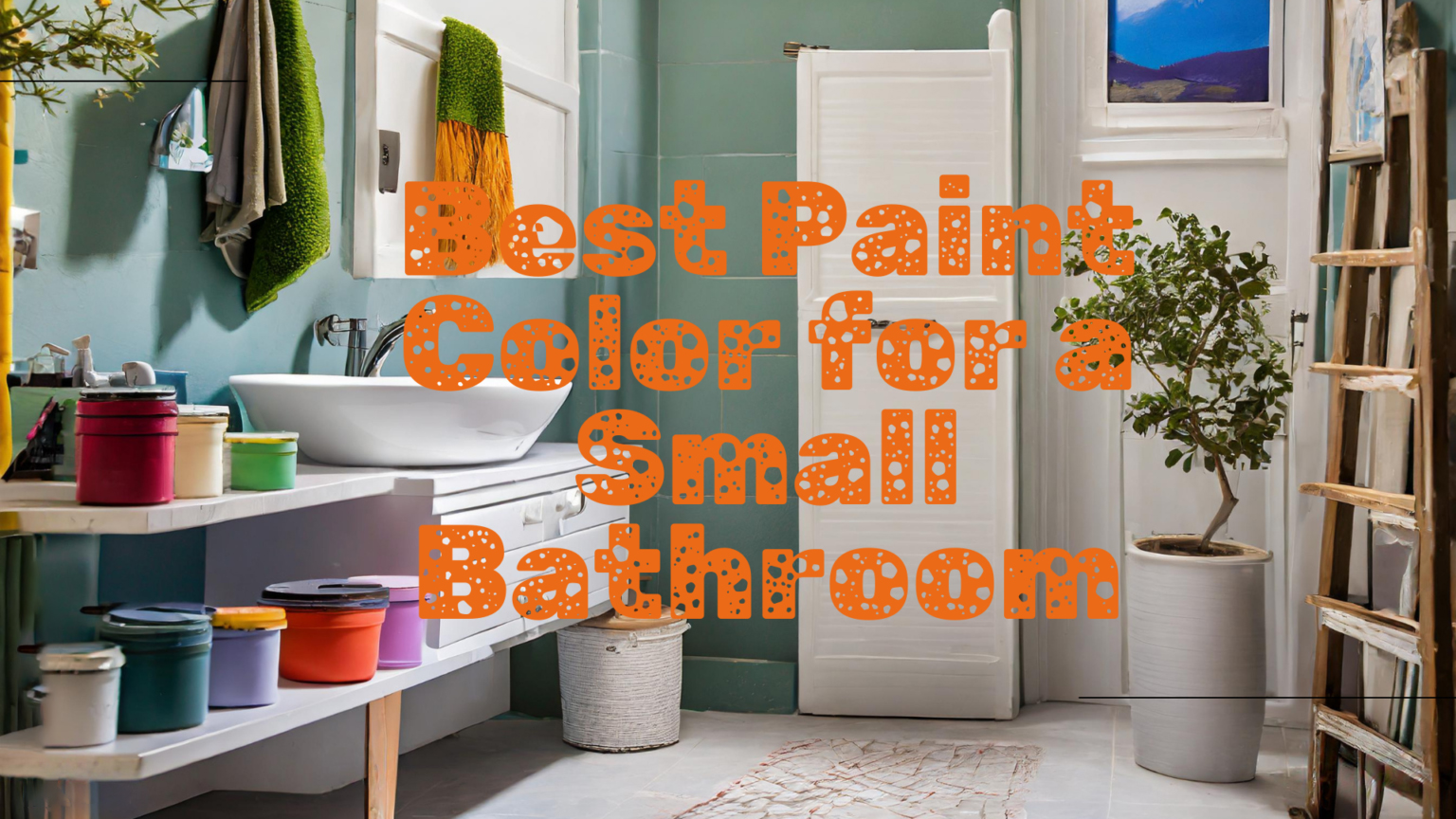Introduction
In this blog post, we’ll delve into the question: What is the Best Paint Color for a Small Bathroom? Designing a small bathroom can be a challenging task, but choosing the right paint color can make a significant difference in creating the illusion of space and depth. We’ll explore various paint colors and design techniques that can transform compact areas into visually appealing and functional spaces.
Table of Contents
Understanding the Challenge
When it comes to decorating a small bathroom, the primary challenge lies in maximizing space and creating a sense of openness. Limited square footage and minimal natural light can make the room feel cramped and claustrophobic. Therefore, selecting the best paint color for a small bathroom is crucial in overcoming these challenges and optimizing the visual appeal of the space.
Principles of Color Psychology
Color psychology plays a pivotal role in interior design, particularly in small spaces like bathrooms. Lighter shades tend to reflect more light, making the room appear larger and more expansive. Soft blues, pale greens, and warm neutrals are excellent choices for creating a sense of depth and tranquility in a small bathroom. These hues evoke feelings of serenity and openness, effectively counteracting the confined nature of the space.
Best Paint Color for a Small Bathroom Color for Creating Depth
Now, let’s delve into some of the best paint color for a small bathroom that can help create the illusion of depth and spaciousness:

- Soft Blue: Soft blue hues, reminiscent of clear skies and tranquil waters, can evoke a sense of calm and serenity in a small bathroom. This color choice reflects light beautifully, making the room feel airy and open.
- Pale Green: Pale green tones, inspired by nature’s lush foliage, can infuse a small bathroom with a refreshing and rejuvenating ambiance. This subtle hue adds a touch of brightness without overwhelming the space, creating a harmonious and inviting atmosphere.
- Warm Neutrals: Warm neutral shades, such as creamy whites, soft beiges, and light grays, are timeless choices for small bathrooms. These versatile colors provide a clean and sophisticated backdrop, allowing other design elements to shine while visually expanding the space.
Tips for Choosing the Right Shade
When selecting the best paint color for a small bathroom, consider the following tips:
- Assess Lighting Conditions: Take into account the amount of natural light in the bathroom. If the space receives ample sunlight, you can opt for slightly darker hues. However, if the room is lacking in natural light, stick to lighter shades to brighten the space.
- Coordinate with Existing Fixtures: Consider the existing fixtures and finishes in the bathroom, such as tiles, countertops, and cabinetry. Choose a paint color that complements these elements to create a cohesive and harmonious design scheme.
- Test Samples: Before committing to a paint color, test samples on the walls to see how they interact with the lighting and decor in the bathroom. Observing the colors in different lighting conditions will help you make an informed decision.
- Consider Personal Preferences: Ultimately, the best paint color for a small bathroom is one that resonates with your personal style and preferences. Whether you prefer soothing blues, refreshing greens, or classic neutrals, choose a color that makes you feel comfortable and at ease in the space.
Accentuating Depth with Additional Design Elements:
In addition to choosing the right paint color, incorporating other design elements can further enhance the sense of depth and spaciousness in a small bathroom:

- Mirrors: Strategically placing mirrors in the bathroom can create the illusion of more space by reflecting light and visually expanding the room. Consider installing a large mirror above the vanity or incorporating mirrored surfaces into the decor.
- Lighting Fixtures: Opt for lighting fixtures that illuminate the entire bathroom evenly, eliminating dark corners and shadows. Recessed lighting, sconces, and pendant lights can enhance the overall brightness and ambiance of the space.
- Storage Solutions: To minimize clutter and maximize floor space, invest in storage solutions that are both functional and visually appealing. Floating shelves, wall-mounted cabinets, and built-in niches can provide ample storage without overwhelming the room.
- Minimalist Decor: Keep the decor simple and streamlined to prevent the bathroom from feeling overcrowded. Choose a few statement pieces, such as artwork or decorative accents, to add personality and charm to the space without overwhelming the design.
Real-Life Examples and Inspirations
To provide inspiration and practical guidance, let’s explore some real-life examples of small bathrooms that have been successfully transformed using the best paint color for a small bathroom and design techniques:
Example 1: A small bathroom with limited natural light was revitalized with a soft blue paint color, creating a serene and spa-like retreat. Mirrored surfaces and minimalist decor further enhanced the sense of space and tranquility.

Example 2: In another small bathroom, warm neutral tones were used to create a timeless and elegant aesthetic. Recessed lighting and sleek storage solutions contributed to the overall sense of openness and sophistication.

Example 3: A compact bathroom with a narrow layout was brightened up with a pale green paint color, reminiscent of a lush garden oasis. Large mirrors and strategically placed lighting fixtures amplified the natural light, making the room feel airy and inviting.

Frequently asked questions (FAQs)
Q: Can dark colors be used in a small bathroom, or should I stick to lighter shades?
A: While lighter shades are generally recommended for small bathrooms to create a sense of spaciousness, dark colors can also be used effectively. Darker hues can add drama and sophistication, but they should be balanced with ample lighting and complemented with lighter accents to prevent the room from feeling too closed-in.
Q: How do I choose the best paint color for a small bathroom if it has limited natural light?
A: When dealing with a small bathroom with minimal natural light, it’s crucial to select paint colors that reflect light and brighten the space. Opt for lighter shades like soft whites, pale pastels, or subtle neutrals to maximize brightness. Additionally, consider incorporating mirrors and strategically placed lighting fixtures to enhance illumination.
Q: Should I paint the ceiling the same color as the walls in a small bathroom?
A: Painting the ceiling the same color as the walls can create a seamless and cohesive look that visually expands the space. This design technique eliminates harsh lines and transitions, making the room feel more open and cohesive. However, if you prefer a contrasting ceiling color, choose a lighter shade to avoid visually lowering the ceiling height.
Q: Are there any paint finishes that are better suited for small bathroom walls?
A: The choice of paint finish can significantly impact the overall look and feel of a small bathroom. For walls, consider using a satin or eggshell finish, which offers a subtle sheen that is easy to clean and reflects light, enhancing brightness. Avoid high-gloss finishes as they can highlight imperfections and make the walls appear too shiny in small spaces.
Q: Can I use accent colors in a small bathroom, or should I stick to a single paint color?
A: Incorporating accent colors can add visual interest and personality to a small bathroom, but it’s essential to use them sparingly to avoid overwhelming the space. Consider adding pops of color through accessories, such as towels, rugs, or artwork, rather than painting entire walls. Choose complementary hues that enhance the main paint color and contribute to a cohesive design scheme.
Q: How can I make a small bathroom feel more spacious besides choosing the right paint color?
A: In addition to selecting the best paint color for a small bathroom, there are several design strategies you can implement to maximize space in a small bathroom. These include using multifunctional furniture and storage solutions, incorporating mirrors to reflect light and create the illusion of more space, and keeping the decor minimal and clutter-free. Additionally, maximizing natural light and ensuring proper ventilation can help enhance the overall sense of openness and comfort in the room.
Q: Can I repaint my small bathroom myself, or should I hire a professional painter?
A: Whether you choose to repaint your small bathroom yourself or hire a professional painter depends on your level of expertise and the complexity of the project. Painting a small bathroom can be a manageable DIY task for those with some experience, but it’s essential to properly prepare the surfaces, use high-quality paint and tools, and take necessary safety precautions. If you’re unsure or prefer to leave it to the experts, hiring a professional painter can ensure a flawless finish and save you time and effort in the long run.
Conclusion
In conclusion, choosing the best paint color for a small bathroom is a crucial step in optimizing space and creating a visually appealing environment. By understanding the principles of color psychology, selecting the right shade, and incorporating complementary design elements, you can transform even the tiniest of bathrooms into stylish and functional spaces. So, the next time you embark on a bathroom renovation project, consider these tips and unleash the potential of your compact oasis.
Also Read: Best Bathroom Exhaust Fan Reviews: for Better Ventilation

